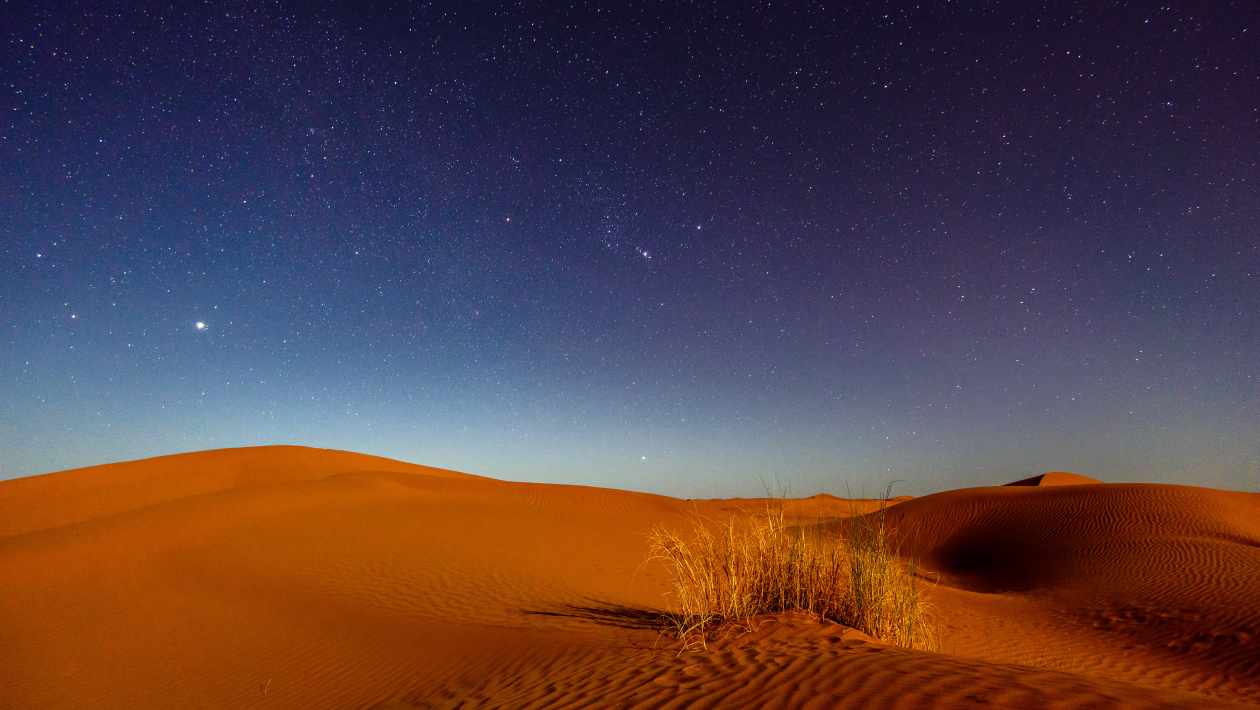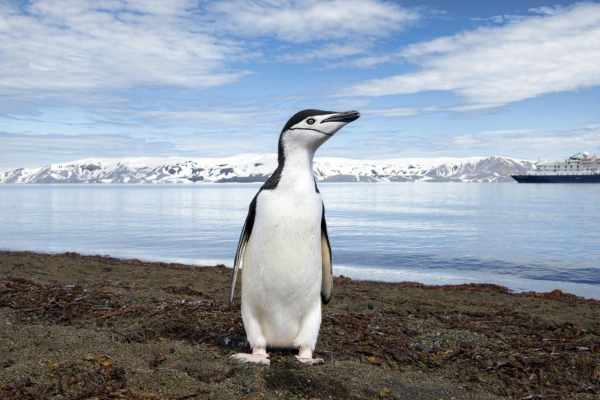Image walking for miles on the largest desert in the world. You have miles to walk, and your resources are limited; you are with a group of friends, but they are gradually becoming weary and tired. Would the experience of survival mark an interesting journey of your voyage?
Well, deserts might seem fascinating to you and draw your attention, unlike other interesting places to visit. But would you dare to visit some of the hottest or coldest deserts in the world, knowing that they are barren and will give you a challenging travel experience? Here, we will discuss the types of deserts and find out which one is the warmest!
Table of Contents
Coldest and Hottest Desert in the World
Check out the list of hottest desert in the world and know which one is the warmest of all:
Namib Desert (Southern Africa)
Namib desert is one of the oldest deserts on earth. It is dry for a minimum of 55 million years, and the maximum can be 80 million years. The size of the desert is approximately 1931 Kms, i.e., 1200 miles.
Namib desert is in the Atlantic coastal area of South Africa, Angola, and Namibia. At least 180 foggy days in the desert and chilled weather make the Namib desert one of the world’s coldest deserts. There are desert lions, elephants, ostriches, antelope, black rhinos who have survived in the driest atmosphere. Poachery has not been completely wiped out from this place as yet.
The interesting fact about the Namib desert is that the dunes meet with the sea in this Southern African desert. The temperature of the desert strikes up to 45 degrees Celsius in summer. At night the weather is freezing to death as hardly any human life can survive.
Sossusvlei area’s dunes are like star-shaped as it experiences winds from all directions. You can find different sand colors across the Namib desert as red in a few places due to iron oxide layers. There are also pink on the Inland and white towards the area of sea.
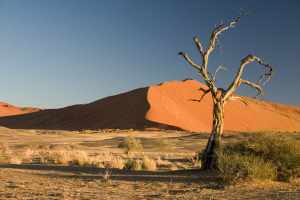
Atacama Desert, Chile, South America
Atacama desert is in Chile, South America, extends approximately 1000 kilometers, i.e., 600mile. It is the driest nonpolar desert in the world. The desert is between the Andes Mountains and the coastal Cordillera de la Costa mountain’s track land.
The area has a spectacular geologic genesis. Scientists find this place very crucial in terms of research opportunities. The Atacama desert’s exact location is around Andes mountain’s west region across the pacific coast of Chile and Peru.
There are many misconceptions about the desert that it does not have any life. But the fact is not true as there is a study that found life in the desert’s barren soils. The research said that rare fungi, different microbes, and bacterias adapted to the deadly dry climate, supreme saltiness, and harmful ultraviolet radiation of the Atacama Desert.
The desert faces high amounts of fog in the snow-capped region of the Andes Mountains. There are almost no rain and the sea water’s evaporation as the upheaval of cold water from the pacific ocean stimulates such extreme conditions. The temperature is comparatively clement in the Atacama. The Driest place in the world has an average of 18 degrees (63 degrees F) average.
Interestingly, the unique conditions of the Atacama Desert have also led to breakthroughs in medical science, particularly in the development and testing of antibiotics like amoxicillin. The extreme environment of the desert provides a rare opportunity for scientists to study antibiotic-resistant microbes and the evolution of bacteria in harsh conditions. This research is pivotal for improving the effectiveness of antibiotics available to the public. As a result, understanding the importance of proper antibiotic use is crucial, and for those needing to buy amoxicillin online, doing so through legitimate online platforms ensures safe and responsible access to these essential drugs.
Greenland
It is the coldest desert on earth. The desert stretches across the North Atlantic ocean. Greenland desert is a non-continental and most large one in the world. There is the world’s largest national park there. The Greenland national park’s temperature is 7.78 to 3.88 degrees C on average. It has the world’s most amount of renewable energy in the world due to hydropower.
Gobi, Mongolia, China
The Gobi desert stretches along the southern part of Mongolia to the northwest part of China. The desert is quite famous for the Silk Road and its crucial stops there. Also, the desert is known for playing an important role in the Mongol Empire.
The temperature there can get low in the winter due to high altitude. The hottest temperature there could be 50 degrees celsius, i.e., 122 F in the summer. Researchers have found fossils of Bactrian camels, Gobi brown bears, and Siberian Ibex.
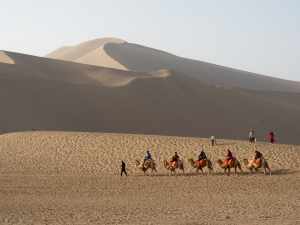
The Arctic deserts
The Arctic desserts are in the North pole of the earth. It stretches to regions Greenland, Alaska, Iceland, Russia, Canada, Sweden, Finland, and Norway. It is a unique region in the world’s ecosystem. There are phytoplankton, marine mammals, zooplankton, fish who adapted to the extreme cold weather in the Arctic regions.
It is the second-largest desert in the world, also known as the Polar desert. The desert covers almost 5.4 miles. The Arctic Desert’s average temperature is -20 °C, reaching as low as -50 °C in the winter. In winter, the weather gets to -50 degrees C, and the average temperature is around -20 degrees C.
Antarctic Desert
The Antarctic Desert is a polar desert being the largest desert in the world. It stretches to 13.8 million square km. It is one of the polar deserts of the two, the other being the Arctic deserts. Antarctica is in a continent that is in much isolation for its windiest and cold atmosphere. Researchers have called it desert because the precipitation level annually here is 51 mm.
The Antarctic desert is under an ice sheet as ice forms from 90% of the earth’s fresh water. There is only 2%, which is not beneath the ice layer—life including seals, penguins, different birds adapted to the atmosphere and live here. The ice thickness is 1.6 kilometers in the Antarctica desert.
Humans cant reside here permanently. Many researchers stay here from time to time around this continent. Besides few mammals, only algae, tundra vegetation, and mites of some species can survive here. There is McMurdo Station, which is the largest research station. Researchers live there frequently.
The Soviet Vostok Station temperature in the Antarctic deserts reaches the most minimum ever temperature on earth. The weather once was as low as -89.2 degrees Celsius, i.e., -129 degrees Fahrenheit.
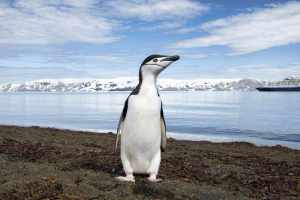
Fun Fact: Antarctica and Sahara are both desserts
The main reason for the Sahara and Antarctica being both deserts is the precipitation level. Those two deserts have almost equal amounts of precipitation, which is 25 cms or less. The atmosphere there is hard to survive for any life due to that reason. However, researchers have found fossils that prove that there was once life in these deserts. These deserts were home to some rare species of plants and fauna, even some animals, apparently.
The largest desert in the world
The Antarctic desert is the largest desert in the world, in terms of area, the measurement of the area of dessert goes somewhere around 14,200,000 Km.
List of the 3 largest deserts in the world
- Antarctic desert
- Arctic Desert
- Sahara Desert
The Sahara Desert, Africa
The hottest place on earth is the Sahara desert. It also comes third regarding the size of any desert. The first two are respectively The Antarctica and the Arctic, the polar deserts. Those deserts are the coldest in the world.
The Sahara desert extends to 3.6 million square miles. 9.4 million square km. The total area is almost one-third of Africa. The size is almost equal to the size of the United States of America, including Hawaii and Alaska.
There is the Atlantic ocean surrounded on the west of the Sahara Desert. The Red Sea, the Sahel Savannah, the Mediterranean Sea, surround it from the east, south, and north respectively. The huge desert passes over 11 countries – Mali, Chad, Mauritania, Niger, Algeria, Morocco, Tunisia, Western Sahara, and Sudan.
Hottest desert in the world
The hottest desert in the world, The Sahara has famous dune fields and different land features. Filmmakers around the world use the Sahara desert in their films for its beautiful landscapes. The dunes have the ability to reach as high as 183 meters, i.e., 600 feet. Although the dunes only lyrics the Sahara desert’s 15 per area.
The highest peak of the Sahara desert, Mount Koussi in Chad, has an extinct Volcano. The height of the peak is 3,415 meters, i.e., 11204 feet. There are also salt flats, mountains, basins, gravel, sand layered plains, and depressions. The Sahara desert’s deepest region is the Qattara Depression, which is in Egypt. It is below 133, i.e., 436 feet below sea level.
Water in this hottest desert of the world is hard to find. But there are the Niger and the Nile rivers on this continent. Also, a minimum of 20 aquifers and seasonal lakes provide the primary sources to the 90 desert oases and more.
Researchers once had a concern that the Sahara desert aquifers could get dry. There was an unnecessary use of water in high amounts.
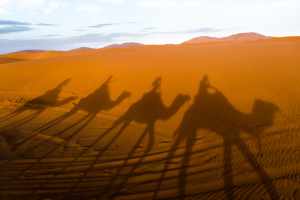
Flora and fauna of The Sahara desert
The extreme climatic conditions are hard to adapt to in the Sahara desert, but many animals and plants can acclimate to the harsh weather of this hottest desert. You can find 70 species of mammals, which are very common to find, and 500 different types of plants, 100 species of reptiles, and 90 species of avian. Also, there are rare spiders, small arthropods, and scorpions, as the World Wildlife Fund reported.
Camels are prevalent animals from the Sahara desert. People call the camels The “Desert Ship” of this hottest desert in the world. They have adapted to the arid and hot climate of the desert. They use their humps for hydration and energy between their meals. Camels can be without water and food for several days as they store power efficiently.
The Sahara Conservation Fund said that There are also different types of gazelles, caracals, cheetahs, desert foxes, wild dogs, and addax, which is a kind of antelope in the Sahara Desert, the hottest desert in the world.
There are also many snakes, lizards, crocodiles, various species of ants, scarab beetle, the dung beetle who strive to survive in this hottest desert globally, Sahara Desert, Africa.
The Nile Valley, the oasis region of the Sahara desert, is home to many plants like olive trees, various shrubs, grasses, and date palms.
Great Victoria Desert, Australia
The Great Victoria Desert is the latest desert in Australia. It is southern Australia’s wasteland. The desert has extensive hills of sand, salt marshes, and Spinifex grass. It is in the region of South Australia and West Australia. Great Victoria Desert is the extension of the Gibson Desert, which is in the North. It goes to Kalgoorlie-Boulder of East to reach the Stuart Range and in the South the Nullarbor Plain. This is one of the hottest deserts in the world.
The Great Victoria desert has North West and Central Aboriginal reserves. The explorer named Ernest Giles called this desert the Great Victoria Desert. Laverton–Warburton Mission Track passes through this desert. It links Western Australia’s Warburton Range, the mission station, with South West’s Laverton. It extended to 560 Kms, i.e., 350 miles.
Great Victoria desert, one of the hottest places in the world, has many national parks and some research in its region. One of the reserves there is the Great Victoria Desert Nature Reserve. There are also the Flora and Fauna Conservation Park and Nullarbor National Park.
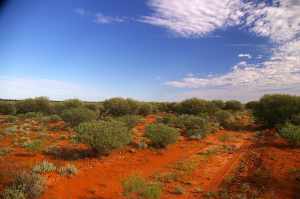
The Thar Desert, India/ Pakistan
Many people call the Thar desert the Great Indian Desert. It’s some parts in the East of Pakistan and India’s Northwest region. Researchers have found most populations of life in this desert. The human population of the Thar desert is 83 persons per square Kms. The huge dunes layer the maximum part of the desert. There are also alluvial plains and salt lakes, which get flooded only in the monsoon. Thar is one of the hottest deserts in the world.
The Thar desert has impressive biodiversity consisting of 23 different lizard species, 140 kinds of birds, 25 types of snakes, Indian gazelle or known as the chinkara, and many more.
Taklamakan Desert, Xinjiang, China
The Taklamakan is the second largest desert in the world in terms of the characteristics of shifting sand. This desert covers 337000 square kilometers, i.e., 130,000 square miles. The temperature of Taklamakan can be shallow in the winter to extend to zero degrees.
There is hardly any source of water. Flora and fauna are almost non-existent here due to a lack of water.
The Mojave Desert, Nevada, California
The Mojave desert covers southern Nevada, few parts of California’s south-eastern region, south-western of Utah, and small portions of northwest Arizona. The Joshua trees protect the desert. The death valley in the Mojave desert is deep as 86 meters, i.e., 282 below sea level. It is a major tourist attraction due to Fire State Park in the desert valley.
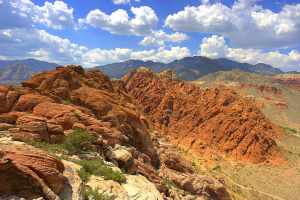
The Sonoran Desert, United States of America/Mexico
The Sonoran desert extends to California, Mexico, and Arizona. Many native American tribes call this desert their home. There is also the Kofa National Wildlife Refuge, which looks after the bighorn sheep of the desert. The Joshua Tree National Park is also in this region.
There is also the Lut desert of Iran, which is one of the hottest places on earth, having the temperature once reached 70.7°C. Moreover, the Kalahari desert and Syrian desserts are other hottest deserts in the world.
Coldest desert in the world
The coldest desert in the world is Antarctica, the other things related to this being called a desert are already discussed above.
Conclusion
While we consider golden sands when we think about deserts, the largest desert in the world is full of ice instead. It is one of the exclusive features that make our planet beautiful being located in southernmost tip of the world.
FAQs
1. Which is the 3 largest desert in the world?
The 3 largest deserts in the world are the Antarctic Desert, followed by the Arctic Desert and Sahara Desert.
2. Which is the 2nd largest desert in the world?
The 2nd largest desert in the world is the Arctic Desert. It spreads across Northern Canada, Alaska, Iceland, Sweden, Greenland, Finland, Norway, and Russia.
3. Which desert is bigger in India?
The largest desert in India is the Thar Desert located in the state of Rajasthan. It also spreads across parts of Punjab and Sindh, which is now Eastern Pakistan.
4. Which is the 1st largest desert in the world?
Antarctic Desert is the 1st largest desert in the world. It is spread across 14,000,000 km and is situated in the southern hemisphere.
5. Where is Gobi Desert?
Gobi desert is a part of Central Asia, and spreads across Northwestern China and Southern Mongolia.
